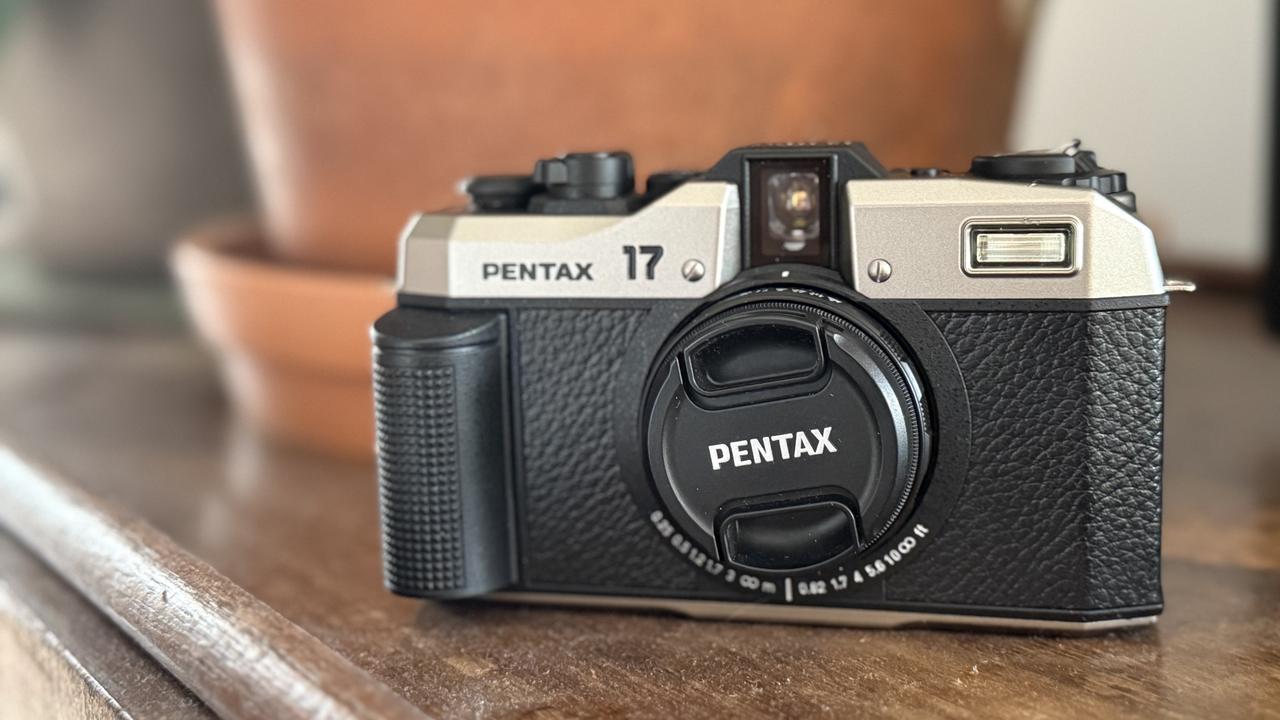Amazon ups ante in room speakers
Amazon has released a room speaker to match Apple HomePod, Google Home Max and Sonos One.
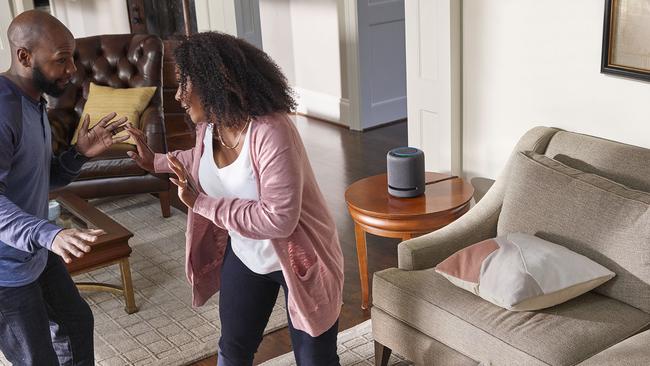
Amazon has released a room speaker to match Apple HomePod, Google Home Max and Sonos One.
All three can amply fill a room with music, and have microphones that let you issue voice commands. Apple and Google speakers also promote their company’s ecospheres including music services.
Instead of Apple Music or YouTube Music, the Echo Studio supports Amazon Music Unlimited, so if you already have an account, it’s a good fit for you. The speaker will play agnostic music streaming services; those that aren’t directly part of Apple or Google, such as Spotify, Deezer, TuneIn and iHeartRadio.
You could regard the Echo Studio as a big, fat version of the second generation Echo Plus or Echo.
It has the same circular rotating light on the top that activates when you issue a voice command to Amazon’s Alexa.
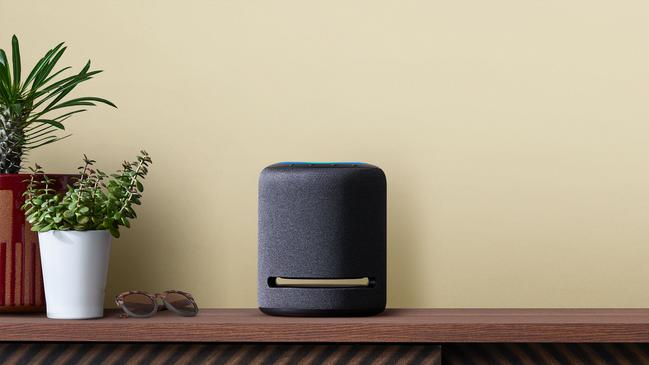
Set-up is straightforward. I unpacked the speaker, plugged it in, and used the Amazon Alexa app on my smartphone to connect the Echo Studio to my home Wi-Fi network. The app also lets you assign the Studio to a room, and declare it the dominant speaker in that room so that music plays on it by default. You can tell Alexa to direct music to a particular speaker.
After completing the configuration, Echo Studio does an audio test to adapt audio output to your room.
Echo Studio looks like Apple HomePod, with its cylindrical shape. It’s a little taller and wider in diameter than HomePod. However, Echo Studio has a large open section about 20 per cent from the bottom that Amazon says maximises bass output and airflow.
Amazon packs a lot of audio into the speaker, despite its competitive price of $329. By comparison, Apple HomePod is $469, Google Home Max is $399 and Sonos One is $199.
All the audio tech is in the upper section. At the top there’s a one-inch forward firing tweeter, then three two-inch mid-range speakers, and below that, a 5.25-inch downward firing woofer.
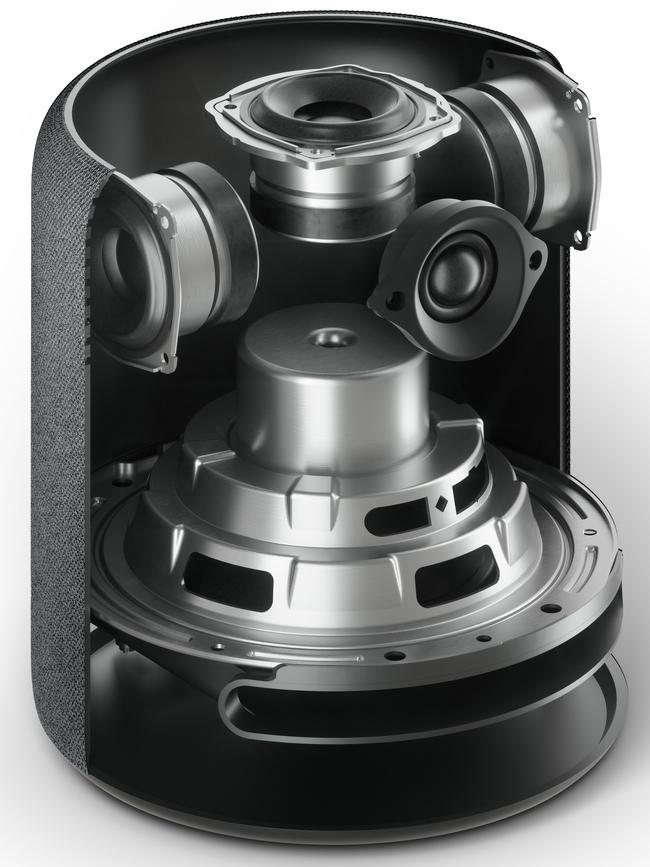
I thought the audio quality on Echo Studio was very good. The treble was clear and undistorted, the bass strong and rich, with little evidence of distortion. Of course Studio isn’t pretending to be a speaker that costs thousands, and you could find better if you spent a lot more, but I’m not quibbling.
Studio outputs up to 330 watt of power and boasts a 24-bit digital to analogue converter and a power amplifier for hi-res music playback.
There’s support for Dolby Atmos and 360 Reality Audio. I’m a fan of 360 degree audio having seen Sony demonstrate it Las Vegas. Sounds, whether they be a voice, instruments, or even a bee in front of you, are projected to specific spots and you feel they are actually there. You can hear that bee fly across the room from left to right in front of you. You need audio files that support these features though.
The device supports a mini optical cable, so you can input audio from your TV. You can configure two Echo Studios as a stereo pair, and the input optical audio sent to one via cable will be shared with the other speaker. You can add an Echo Sub for a 2.1 home theatre system. Echo Studio can become part of a multi-room music speaker set-up.
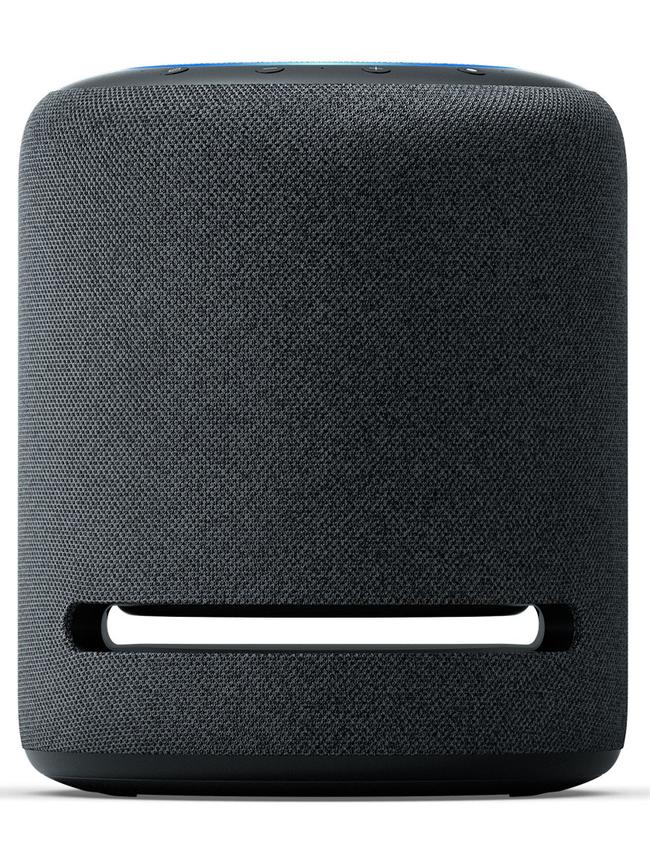
The Studio’s microphone accepts voice commands. To ask Alexa to play music, you say “Alexa, play Money by Pink Floyd”. Alexa can go further on the Studio. You can ask Alexa to set the treble or bass level to a specified level or reset the equaliser.
You can ask it to perform all of the tasks you’d request through a regular Amazon Echo. When you buy a Studio, Amazon gives you 14 days free access to Music Unlimited and you get another 30 days free if you sign up for the music service.
Studio Hub is the latest in a slew of Amazon devices designed to get Alexa past your front door, beckoning you into Amazon’s retail ecosphere.
Amazon also is rolling out new Alexa software features, such as the ability for Alexa to recommend routines or a collection of tasks it performs, for Alexa to provide reasoning for her responses or what she heard from you, and an auto-delete privacy feature. It lets users have their voice recordings older than 3 or 18 months automatically deleted on an ongoing basis.

